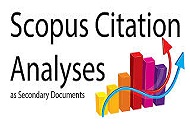Efektivitas Pembelajaran Bahasa Indonesia Bagi Penutur Asing di KBRI Finlandia
DOI:
https://doi.org/10.33394/jk.v6i1.2286Keywords:
Effectiveness, Teaching, Course Experience Questionnaire, BIPA.Abstract
This study aims to investigate the effectiveness of Bahasa Indonesia for non native speakers teaching process in the Finland Embassy based on the students perception through survey method. This study means to give the descriptive information about the teaching process held in 2018. The subject of this research is all the participant of the BIPA program. The instrument of the research is Course Experience Questionnaire (CEQ) by Ramsden (1993) which includes; Teaching Quality, Generic Skills, Students motivation, Academic environment, Assessment, and Curriculum. The data is analyzed by using psicometric Likert scale. The result of the study show; Teaching Quality is categorized effective, Generic skills is categorized less effective, Students motivation is categorized effective, Academic environment is categorized quite effective, Assessment is categorized quite effective, and Curriculum is categorized not effective. Overall, the process of the BIPA teaching activity is categorized quite effective.
References
Ainley, J. (2001). The 1999 postgraduate research experience questionnaire,Department of Education, Training andYouth Affairs (DETYA). Australian Council for Educational Research (ACER)
Ardiyansyah. (2012). Profil BIPA Badan Pengembangan Dan Pembinaan Bahasa. http://badanbahasa.kemdikbud.go.id/lamanbahasa/info_bipa
BC College & Institute Student Outcomes Survey (BC CISOS) (2008). Understanding student satisfaction. Vol. 3 No.1. Available at http://outcomes.ceiss.org/Publications/.
Bystrom, H. N. E. (2004). Teaching evaluations at the introductory finance course at
Desliana Maulipaksi : https://www.kemdikbud.go.id/main/blog/2016/04/program-bahasa-indonesia-bagi-penutur-asing-bipa-akan-miliki-standar-baku.
Gedgrave, I. (1999). Modern teaching of physic. Delhi: Global Media Bhagirath Palace.
IAFOR Journal of Language Learning Volume 3 – Issue 2 – Winter 2017. https://www.academia.edu/37781903/Persepsi_dan_Ekspektasi_Mahasiswa_BIPA_Yuexiu_di_Tiongkok_Terhadap_Indonesia?auto=download
Indria Mulyaningsih. (2017): http://kui.ikmi.ac.id/2017/12/16/kurikulum-pembelajaran-bahasa-indonesia-bagi-penutur-asing-bipa/
Johnston C. et al., (2011). Measuring students experience: relationship between teaching quality isntrumen (TQI) and Course Expereinece Questionaire(CEQ). Department of economic. Melbourne, The university of Melbourne
Kember, D. (2004). Interpreting students workload, and factors which shapes students perception of their workload. Jurnal Studies In Higher Eduction vol 29. No. 2
Kember, D & Leung, D. Y. P. (2009).Development of a questionnaire for assessing students’ perceptions of the teaching and learning environment and its use in quality assurance. London: Springer.
Laili Etika Rahmawati dan Dawid Michał Gajewski (2010) Urgensi Penilaian Dalam Pembelajaran Bipa Program Studi Pendidikan Bahasa Indonesia FKIP Uiversitas Muhammadiyah Surakarta. PROSIDING SEMNAS KBSP V E-ISSN: 2621-1661 153.
Lund University: A comparison of the Course Experience Questionnaire and a traditional Evaluation Approach. Lund: Lund University.
M Latief. (2013). "BIPA, Tingkatkan Fungsi Bahasa Indonesia Menjadi Bahasa Internasional",https://edukasi.kompas.com/read/2013/10/23/1253102/BIPA.Tingkatkan.Fungsi.Bahasa.Indonesia.Menjadi.Bahasa.Internasional.
Mardapi, Djemari. (2004). Pedoman Khusus Pengembangan Instrument Dan Penilaian Ranah Afectif. Jakarta. Departemen Pendididkan Nasional.
Maulana-Eh. (2013). http://www.unpad.ac.id/2013/05/melalui-program-bipa-bahasa-indonesia-semakin-banyak-dipelajari-oleh-orang-asing/
Nunan, T., Rigmor, G., & McCausland, H. (2000). Implementing graduate skills as an Australian University, in Fallows, S.,and Steven, C., (eds) Integrating KeySkills in Higher Education, London Krogan Page.
Saputro, E. P., & Arikunto, S. (2018). Keefektifan manajemen program pembelajaran BIPA (Bahasa Indonesia bagi Penutur Asing) di kota Yogyakarta. Jurnal Akuntabilitas Manajemen Pendidikan, 6(1), 122-138.
Scheerens, J. (2009). Improving school effectiveness. Fundamental of Educational Planning. No. 68. United Nation Educational, Scientific, and Cultural Organosation (UNESCO). Paris.
Sidhu, Gurnam Kaur. (2003). Literature in thelanguage classrooms: Seeing through the eyes of learners. In: Ganakumaran & Edwin Malachi (eds.). Teaching ofliterature in ESL/EFL. contexts. pp. 88-110. Petaling Jaya: Sasbadi-Melta ELT Series.
Ur, P. (2009). A course in language teaching: practice and theory. Cambridge: Cambridge University Press.
Wahyu Joko Saputra, dalam (Arief Kurniatama dan Listya Buana Putra (2018), Revisi Bipa Untuk Mahasiswa Asing Observasi dan Sit in BIPA di IAIN Surakarta
Downloads
Published
How to Cite
Issue
Section
Citation Check
License
License and Publishing AgreementIn submitting the manuscript to the journal, the authors certify that:
- They are authorized by their co-authors to enter into these arrangements.
- The work described has not been formally published before, except in the form of an abstract or as part of a published lecture, review, thesis, or overlay journal.
- That it is not under consideration for publication elsewhere,
- That its publication has been approved by all the author(s) and by the responsible authorities – tacitly or explicitly – of the institutes where the work has been carried out.
- They secure the right to reproduce any material that has already been published or copyrighted elsewhere.
- They agree to the following license and publishing agreement.
Authors who publish with JK agree to the following terms:
- Authors retain copyright and grant the journal right of first publication with the work simultaneously licensed under a Creative Commons Attribution License (CC BY-SA 4.0) that allows others to share the work with an acknowledgment of the work's authorship and initial publication in this journal.Â
- Authors are able to enter into separate, additional contractual arrangements for the non-exclusive distribution of the journal's published version of the work (e.g., post it to an institutional repository or publish it in a book), with an acknowledgment of its initial publication in this journal.
- Authors are permitted and encouraged to post their work online (e.g., in institutional repositories or on their website) prior to and during the submission process, as it can lead to productive exchanges, as well as earlier and greater citation of published work.
- Open Data Commons Attribution License, http://www.opendatacommons.org/licenses/by/1.0/ (default)

This work is licensed under a Creative Commons Attribution-ShareAlike 4.0 International License.








